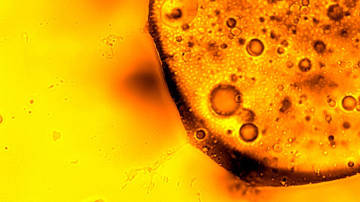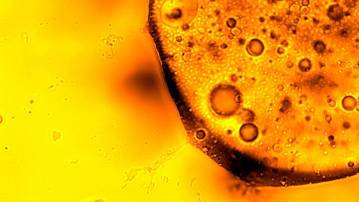New microbe discovered eating Gulf oil spill
Source: theglobeandmail.com
A newly discovered type of oil-eating microbe suddenly is flourishing in the Gulf of Mexico.Scientists discovered the new microbe while studying the underwater dispersion of millions of gallons of oil spilled into the Gulf since the explosion of BP’s Deepwater Horizon drilling rig.

This image shows microbes degrading oil (upper right) in the deepwater oil plume caused by the explosion of BP’s Deepwater Horizon oil rig in the Gulf of Mexico REUTERS/Hoi-Ying Holman Group
Also, the microbe works without significantly depleting oxygen in the water, researchers led by Terry Hazen at Lawrence Berkeley National Laboratory in Berkeley, California, reported Tuesday in the online journal Sciencexpress.
“Our findings, which provide the first data ever on microbial activity from a deep-water dispersed oil plume, suggest” a great potential for bacteria to help dispose of oil plumes in the deep-sea, Mr. Hazen said in a statement.
Environmentalists have raised fears about the giant oil spill and the underwater plume of dispersed oil, particularly its potential effects on sea life. A report just last week described a 35-kilometre-long underwater mist of tiny oil droplets.
“Our findings show that the influx of oil profoundly altered the microbial community by significantly stimulating deep-sea” cold temperature bacteria that are closely related to known petroleum-degrading microbes, Mr. Hazen reported.
Their findings are based on more than 200 samples collected from 17 deep-water sites between May 25 and June 2. They found that the dominant microbe in the oil plume is a new species, closely related to members of Oceanospirillales.
This microbe thrives in cold water, with temperatures in the deep recorded at 5 degrees Celsius.
Mr. Hazen suggested that the bacteria may have adapted over time due to periodic leaks and natural seeps of oil in the Gulf.
Scientists also had been concerned that oil-eating activity by microbes would consume large amounts of oxygen in the water and create a “dead zone” dangerous to other life. The new study found that oxygen saturation outside the oil plume was 67 per cent while within the plume it was 59 per cent.
Article from: theglobeandmail.com
The Energy Report - 8/24/10
Video from: YouTube.com






















